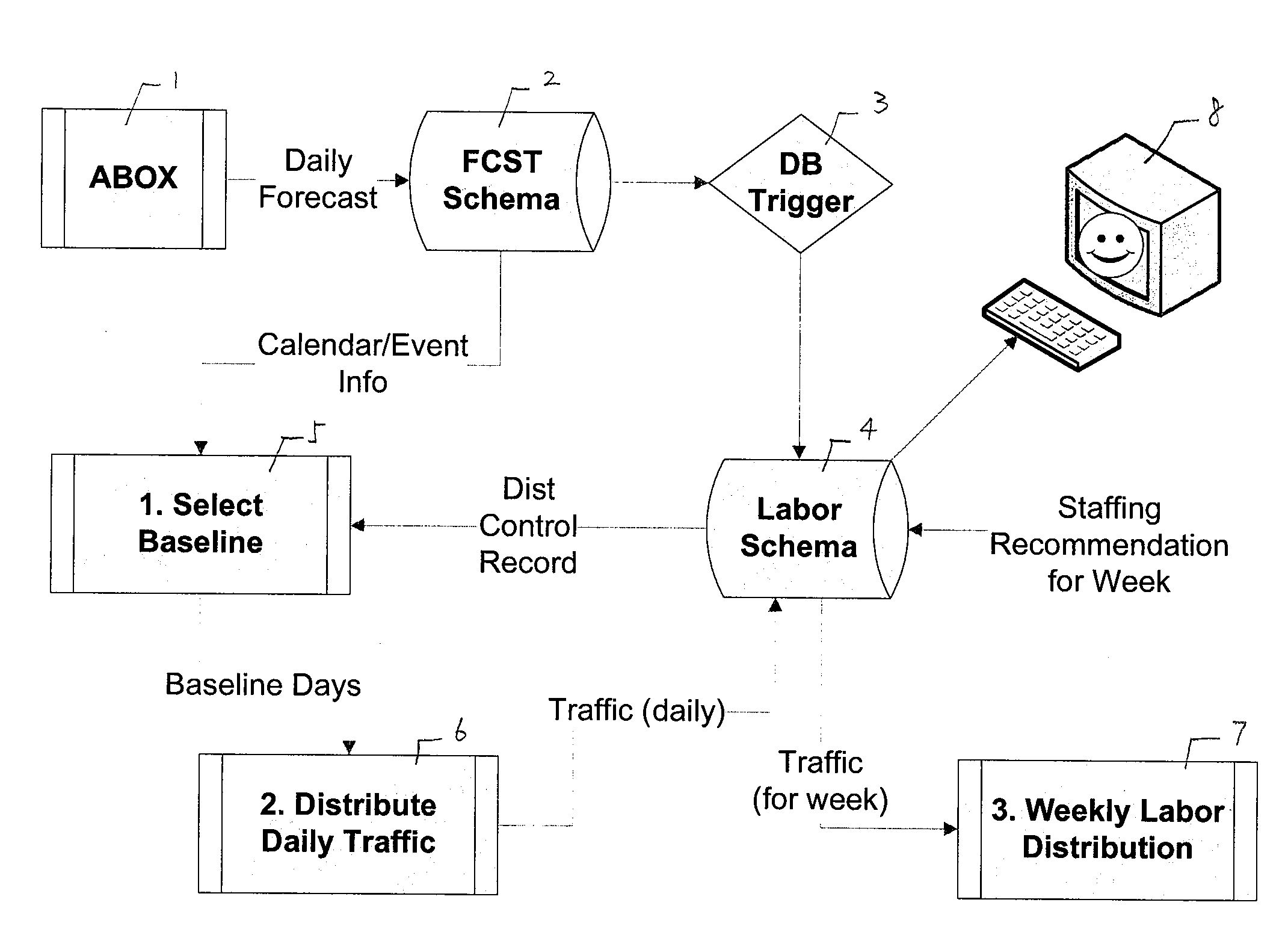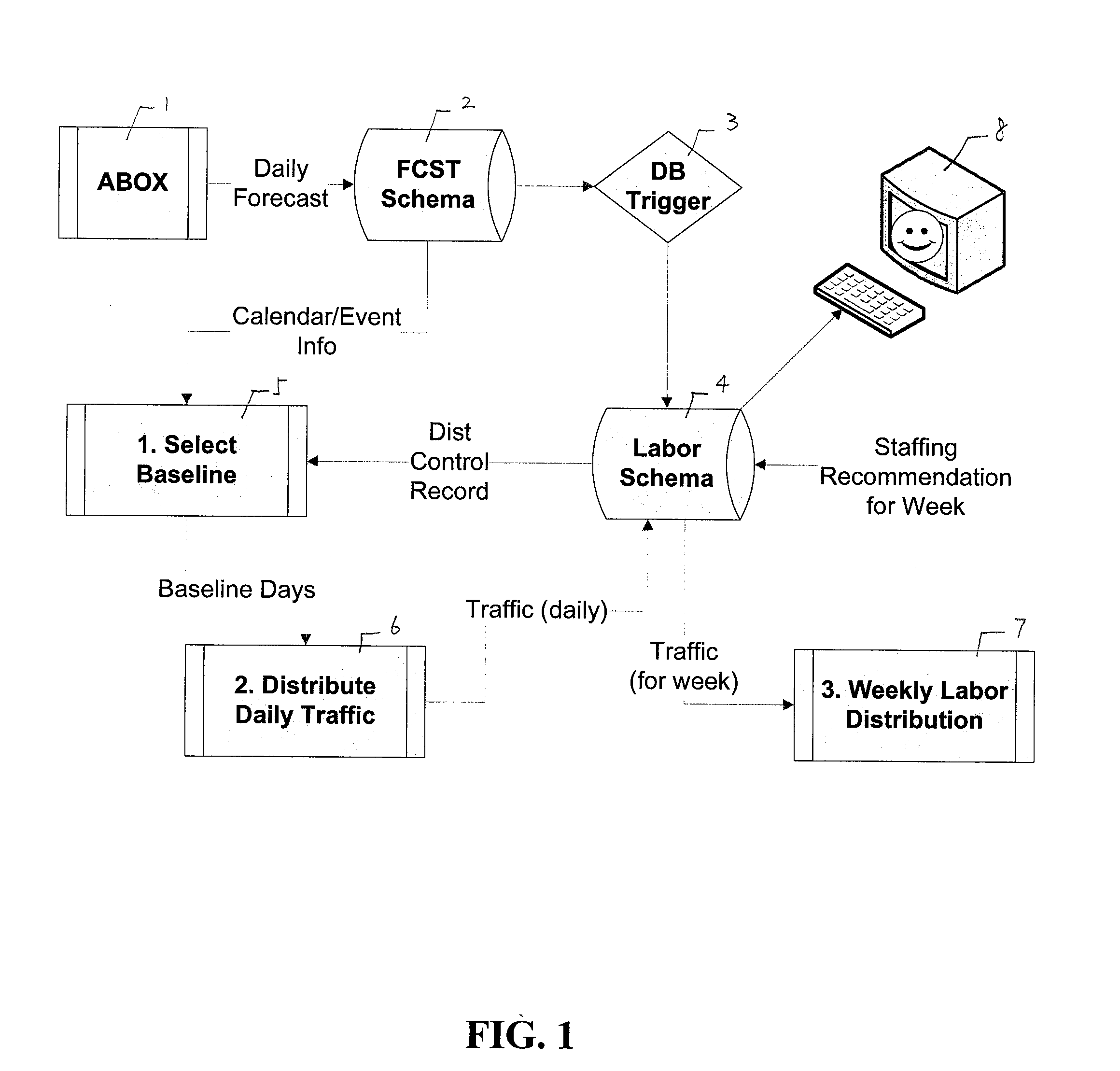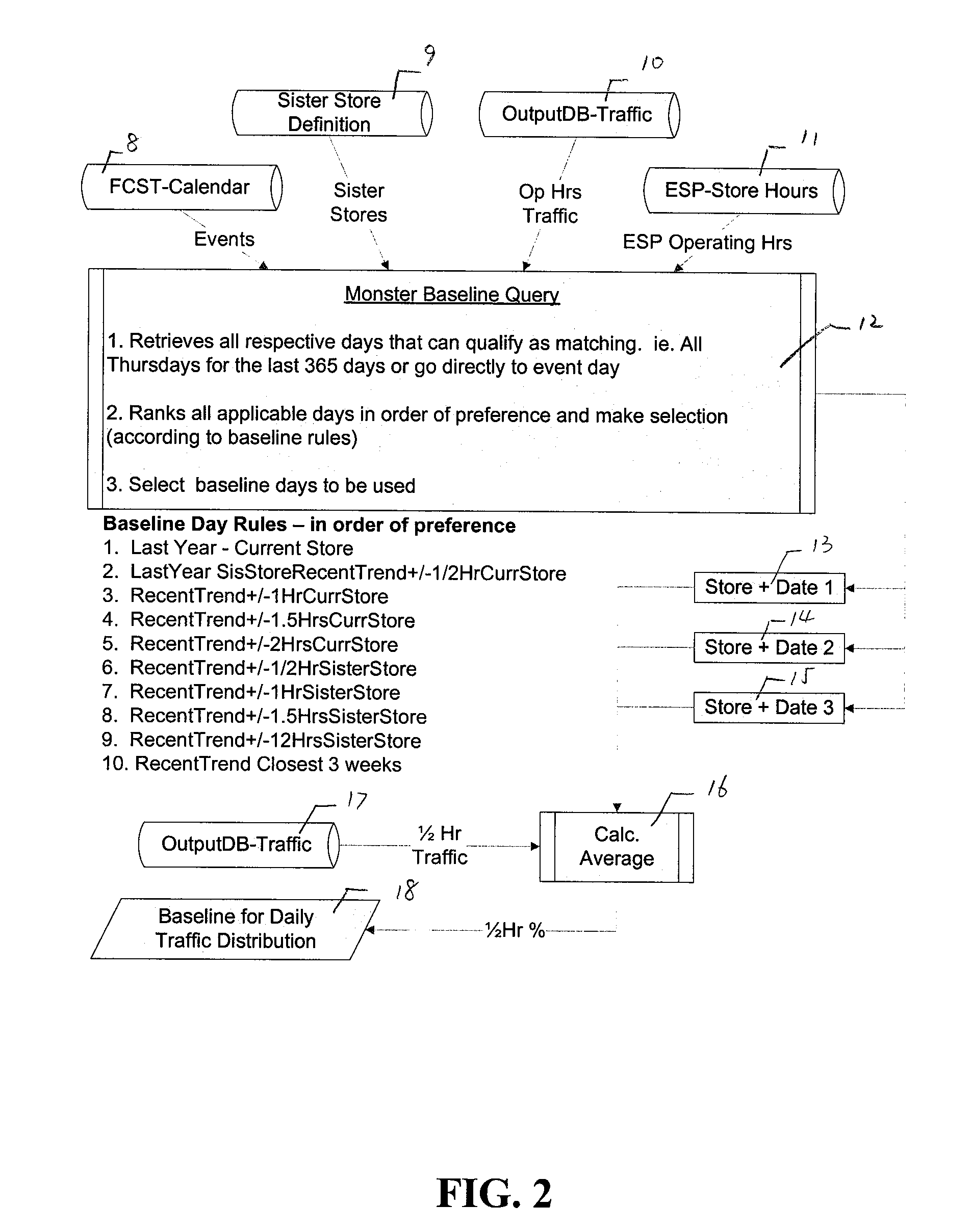Traffic based labor allocation method and system
a technology of traffic allocation and labor allocation, applied in the field of labor or workforce management, can solve the problems of not being able previous scheduling approaches have not come to realize the importance of store traffic, and historical store sales information may not be a good indication, so as to assess staffing effectiveness
- Summary
- Abstract
- Description
- Claims
- Application Information
AI Technical Summary
Benefits of technology
Problems solved by technology
Method used
Image
Examples
Embodiment Construction
[0034]This detailed description is presented in terms of programs, data structures or procedures executed on a computer or network of computers. The software programs implemented by the system may be written in languages such as JAVA, C++, C#, Python, PHP, or HTML. However, one of skill in the art will appreciate that other languages may be used instead, or in combination with the foregoing.
[0035]Store traffic is represented by foot traffic, which, for a store, is the count of shoppers in the store during a given interval.
[0036]Statistically, a distribution is defined as a set of numbers, each number having a frequency of occurrence collected from measurements over a statistical population.
[0037]FIG. 1 illustrates the system architecture of one embodiment of the invention. Major functions include select baseline 5, distribute daily traffic 6, and weekly labor distribution 7, as will be described.
[0038]As seen in FIG. 1, AutoBox (ABOX) 1 performs daily store foot traffic forecasts us...
PUM
 Login to View More
Login to View More Abstract
Description
Claims
Application Information
 Login to View More
Login to View More - R&D
- Intellectual Property
- Life Sciences
- Materials
- Tech Scout
- Unparalleled Data Quality
- Higher Quality Content
- 60% Fewer Hallucinations
Browse by: Latest US Patents, China's latest patents, Technical Efficacy Thesaurus, Application Domain, Technology Topic, Popular Technical Reports.
© 2025 PatSnap. All rights reserved.Legal|Privacy policy|Modern Slavery Act Transparency Statement|Sitemap|About US| Contact US: help@patsnap.com



